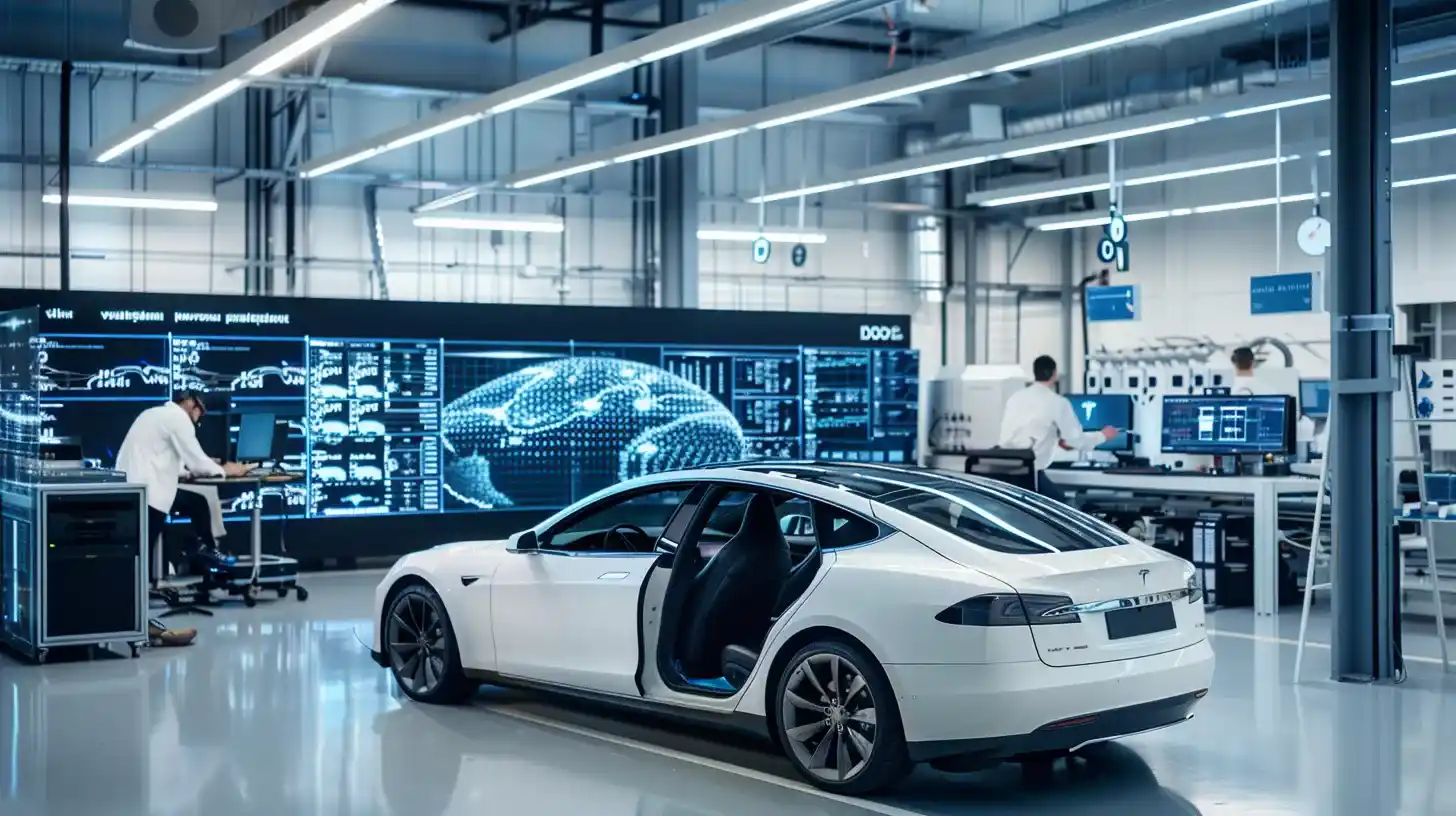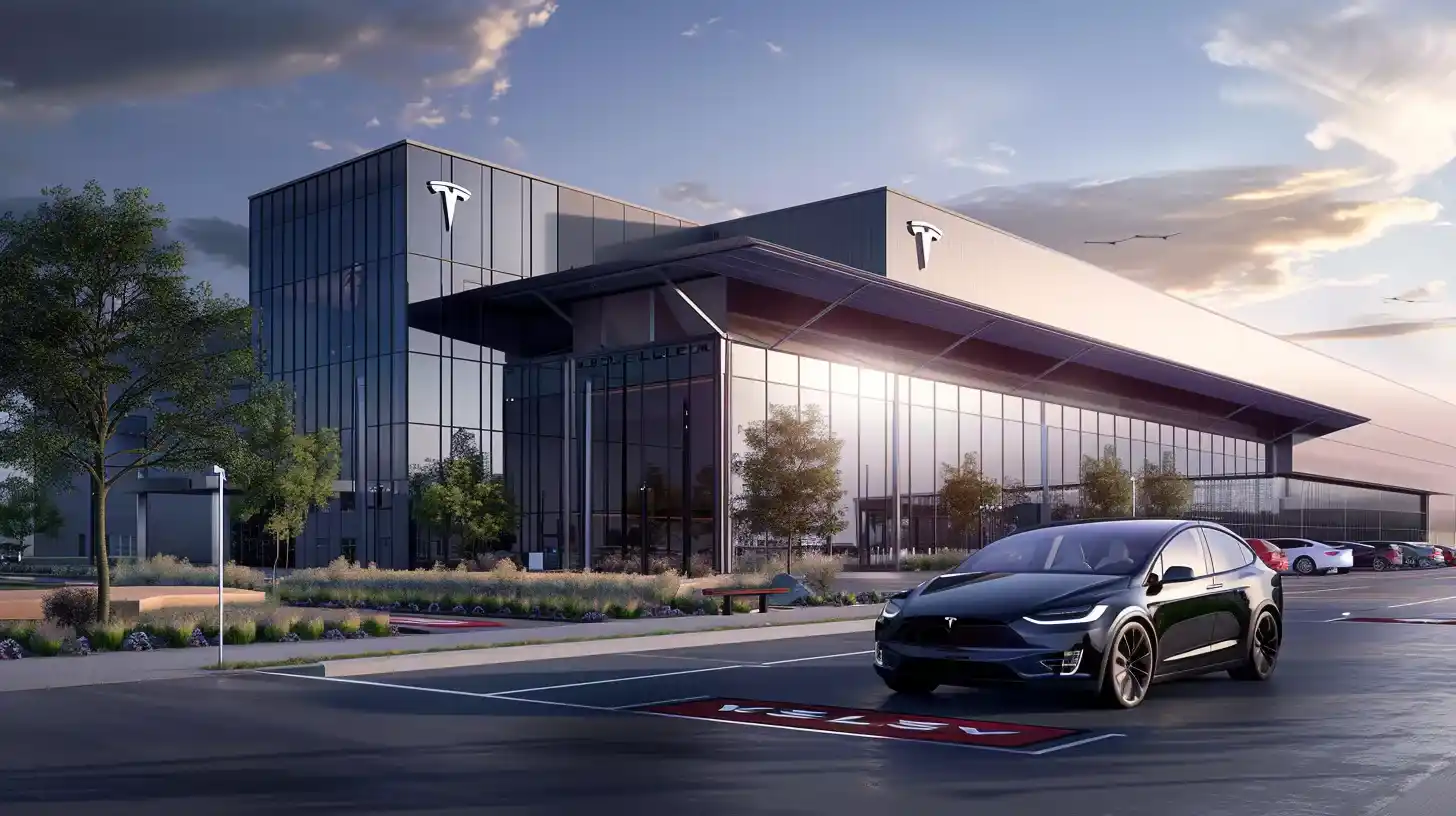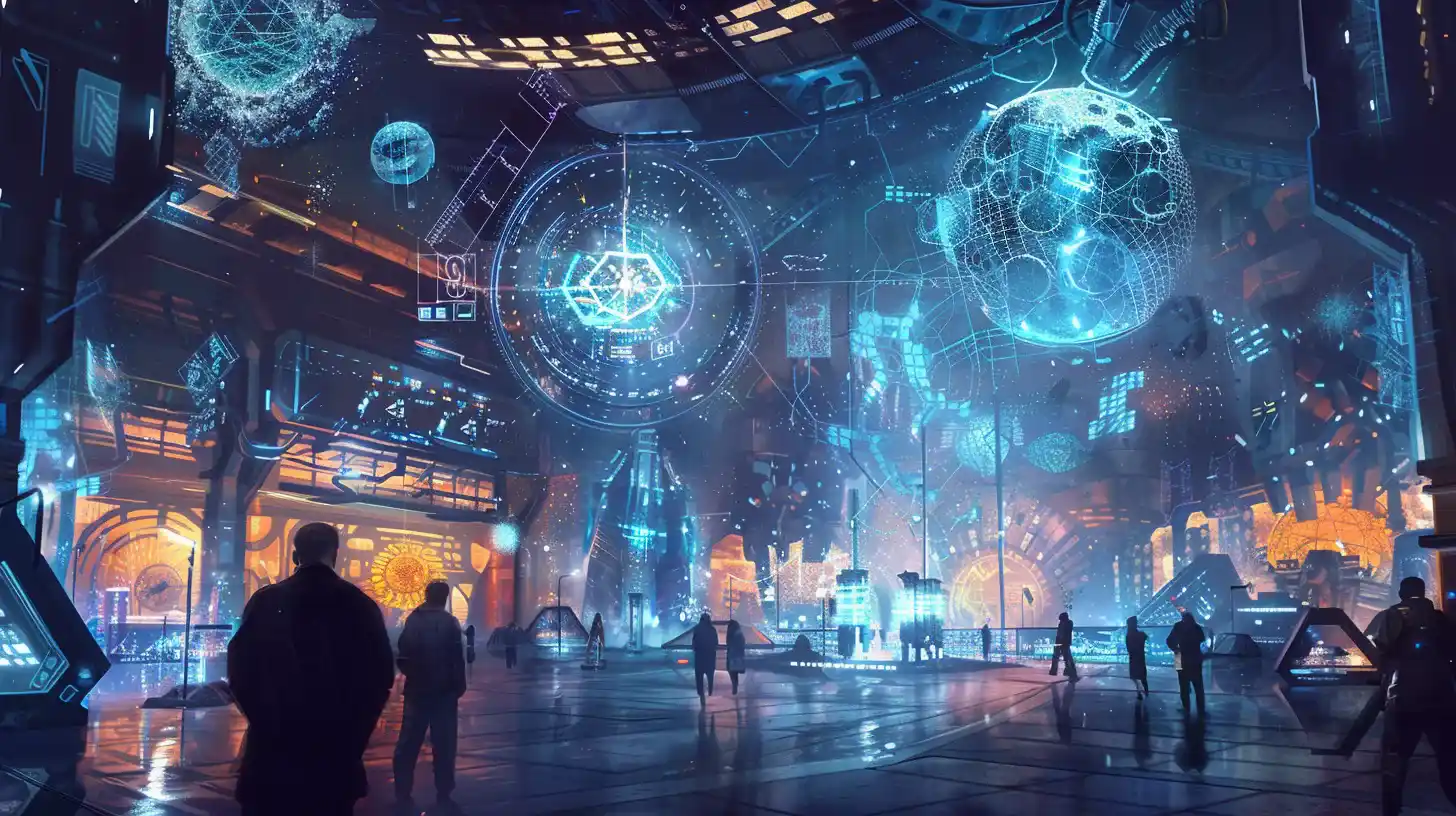Table of Contents
Dojo AI: This is a supercomputer built by Tesla specifically for training machine learning models used in their Full Self-Driving (FSD) technology for autonomous vehicles. It’s designed for video processing and recognition tasks and went into production in July 2023.
What is Dojo AI?
In the realm of Artificial Intelligence (AI), particularly when it comes to self-driving cars, “Dojo” refers specifically to Tesla Dojo, a supercomputer custom-designed and built by Tesla. Unlike conventional supercomputers focused on general-purpose computing, Dojo AI is optimized for a very specific task: training the massive machine learning models that power Tesla’s Full Self-Driving (FSD) technology.

Here’s a deeper dive into Dojo’s purpose and functionalities:
- Core Function: Dojo’s primary function is to process and analyze the enormous amount of video data captured by Tesla‘s fleet of millions of cars on the road. This data includes real-world driving scenarios, traffic patterns, and various environmental conditions. By ingesting and analyzing this data, Dojo helps train and refine the complex algorithms that control Tesla’s autonomous driving systems.
- Focus on Video Processing: Tesla designed Dojo AI with a unique architecture specifically suited for video processing and recognition tasks. Traditional supercomputers might be optimized for scientific calculations or financial modeling, but Dojo AI prioritizes handling the vast streams of video information crucial for self-driving development.
- Training Powerhouse: Machine learning models improve by processing massive datasets. Dojo’s immense processing power allows it to train these models significantly faster compared to conventional computing systems. This translates to quicker advancements and refinements in Tesla’s FSD technology.
Beyond its core function, Dojo AI represents a significant step for Tesla in terms of:
- Vertical Integration: By designing and building their own supercomputer, Tesla reduces reliance on external vendors and potentially gains greater control over the hardware and software aspects of their FSD development.
- Data Efficiency: Dojo’s architecture is optimized for handling the specific type of data Tesla uses for training. This focus may lead to improved data efficiency compared to using generic supercomputers.
Dojo AI serves as the powerful “brain” behind Tesla’s self-driving ambitions. By efficiently processing real-world driving data, it plays a critical role in the development and improvement of Tesla’s autonomous vehicle technology.
Is Tesla Using Dojo AI?
Yes, Tesla confirmed that Dojo AI went into production in July 2023. This marked a significant milestone for their self-driving car development. Here’s how Dojo AI is being utilized by Tesla:
- Training FSD Models: The primary use case for Dojo AI is training the complex neural networks that power Tesla’s Full Self-Driving technology. These models require massive amounts of data to learn and improve their ability to navigate roads, interpret traffic situations, and make safe driving decisions. Dojo’s processing power allows Tesla to train these models with real-world data at an accelerated pace.
- Closed-Loop Learning: Tesla envisions a closed-loop system where Dojo AI interacts with Tesla vehicles on the road. Cars can continuously capture driving data and send it to Dojo AI for training. Dojo then refines the FSD models and sends them back to the vehicles for implementation and further data collection. This continuous cycle allows for ongoing improvement and adaptation of self-driving technology.
- Potential for Other Applications: While currently focused on FSD, Dojo’s capabilities might extend beyond self-driving cars in the future. Tesla has hinted at the possibility of using Dojo for other AI projects within the company, leveraging its processing power for tasks requiring large-scale data analysis.

The use of Dojo AI signifies a shift in Tesla’s approach to self-driving development. By having a powerful, custom-built supercomputer, Tesla gains greater control over the training process and potentially accelerates the development of their FSD technology. However, it’s important to note that:
- Limited Public Information: Tesla hasn’t disclosed all the specifics of Dojo’s operations or performance. We don’t have exact details on how Dojo AI integrates with Tesla vehicles or the training timelines for FSD models.
- Focus on Self-Driving: While Dojo AI might have future applications beyond self-driving cars, its current use case seems firmly focused on FSD development.
Tesla’s utilization of Dojo AI demonstrates its commitment to developing a robust and advanced self-driving system. Dojo AI serves as a powerful tool for processing real-world data and training the complex algorithms that will pave the way for autonomous vehicles.
How Much Does the Tesla Dojo Cost?
The exact cost of a single Tesla Dojo supercomputer is estimated to be in the range of $300 million to $500 million. Here’s a breakdown of the known information:
- Initial Investment: Elon Musk initially mentioned “north of a billion” dollars being spent on Dojo by the end of 2024. This suggests a minimum investment of at least $1 billion, potentially covering the development and construction of multiple Dojo units.
- First Dojo: Reports indicate the first operational Dojo supercomputer cost around $300 million to build. This figure likely reflects the cost of hardware, software development, and infrastructure needed to house and operate the system.
- Buffalo Dojo: Tesla announced a second Dojo facility in Buffalo, New York, with an estimated cost of $500 million. This suggests potential variations in cost depending on factors like facility size, hardware configuration, and specific functionalities.
It’s important to consider that these figures might not capture the total cost of ownership. Ongoing maintenance, energy consumption, and personnel costs associated with running the Dojo likely add to the overall expenditure.

Here’s a deeper look at the cost implications of Dojo:
- Vertical Integration Costs: While offering greater control, developing and building a custom supercomputer like Dojo might be more expensive than relying on existing commercial solutions. However, Tesla might see this as a long-term investment with potential benefits for future AI projects.
- Data Center Infrastructure: Housing and powering a supercomputer like Dojo requires significant infrastructure investment. Cooling systems, power supplies, and specialized data center facilities contribute to the overall cost.
- Ongoing Operational Costs: The ongoing cost of running Dojo includes personnel for maintenance, energy consumption for powering the system, and potential software upgrades as Dojo evolves.
The high cost of Dojo reflects the significant resources Tesla is dedicating to developing a leading self-driving car technology. While expensive, Dojo offers Tesla several potential benefits, including:
- Faster Training: Dojo’s processing power allows for faster training of FSD models, potentially accelerating the development timeline.
- Improved Efficiency: The custom architecture might lead to better data efficiency compared to using generic supercomputers.
- Long-Term Potential: Tesla might leverage Dojo’s capabilities for future AI projects beyond self-driving cars, potentially justifying the initial investment.
Ultimately, the true cost of Dojo needs to be weighed against the potential benefits it offers in accelerating Tesla’s self-driving car development and potentially serving other AI endeavors in the future.
Is Dojo AI the Most Powerful Computer?
As of today, May 2nd, 2024, Dojo’s status as the most powerful computer depends on how you define “powerful.” Here’s a breakdown of the situation:
- Raw Performance Claims: Tesla claims Dojo will achieve an exaflop (1 quintillion floating-point operations per second) of computing power when fully operational. This would undeniably place it among the most powerful computers globally.
- Benchmark Uncertainty: However, there’s a lack of independent verification through standard benchmarks used to rank supercomputers. Without official benchmarks, it’s difficult to definitively say Dojo is the absolute leader.
- Specialized Design: Dojo is specifically designed for training AI models, particularly for video processing relevant to self-driving cars. While powerful for its intended use, it might not outperform other supercomputers optimized for different tasks like scientific simulations or financial modeling.

Here’s a deeper look at the factors influencing Dojo’s claim to be the most powerful:
- Exaflop Goal: If Tesla achieves its exaflop target, Dojo will undoubtedly be a leader in raw computational power. However, achieving this level of performance in real-world operations needs confirmation through independent benchmarks.
- Focus on AI Training: Dojo’s architecture prioritizes speed and efficiency for training AI models, particularly those requiring video processing. While powerful in this domain, it might not be the most efficient for tasks demanding high precision or complex mathematical calculations compared to supercomputers optimized for those specific use cases.
- Future Competition: The supercomputer landscape is constantly evolving. New machines are always under development, aiming to push the boundaries of computational power. Dojo might face competition from other supercomputers focused on general-purpose computing or designed for specific scientific or engineering applications.
Pros:
- Faster Training of FSD Models: Dojo’s immense processing power allows Tesla to train the complex neural networks powering their Full Self-Driving (FSD) technology at a significantly faster pace compared to conventional computing systems. This translates to quicker advancements and refinements in Tesla’s self-driving car capabilities.
- Improved Data Efficiency: Dojo’s architecture is specifically designed for video processing and recognition tasks relevant to self-driving cars. This focus might lead to improved efficiency in handling the massive amounts of video data Tesla uses for training compared to using generic supercomputers.
- Greater Control and Integration: By designing and building their own supercomputer, Tesla reduces reliance on external vendors for training their FSD models. This allows for greater control over the hardware and software aspects of their self-driving development process.
- Potential for Other AI Applications: While currently focused on FSD, Dojo’s processing power might be leveraged for other AI projects within Tesla in the future. This could include tasks requiring large-scale data analysis in areas beyond self-driving cars.
- Closed-Loop Learning Potential: Tesla envisions a future where Dojo interacts with Tesla vehicles on the road in a closed-loop system. Cars can continuously capture driving data and send it to Dojo for training. Dojo then refines the FSD models and sends them back to the vehicles for implementation and further data collection. This continuous cycle allows for ongoing improvement and adaptation of self-driving technology.
Cons:
- High Cost: The estimated cost of a single Dojo supercomputer is in the range of $300 million to $500 million. This signifies a significant investment for Tesla, with ongoing operational costs adding to the overall expenditure.
- Limited Public Information: Tesla hasn’t disclosed all the specifics of Dojo’s operations or performance. We lack details on how Dojo integrates with Tesla vehicles or the training timelines for FSD models. This lack of transparency makes it difficult to fully assess Dojo’s effectiveness.
- Focus on Specific Use Case: Currently, Dojo is primarily focused on training models for Tesla’s self-driving cars. While it might have future applications beyond this domain, its current functionality is limited.
- Benchmark Uncertainty: While Tesla claims Dojo will achieve exaflop computing power, there’s a lack of independent verification through standard benchmarks. Without confirmation by recognized benchmarks, it’s difficult to definitively say Dojo is the absolute leader in raw computing power.
- Competition: The supercomputer landscape is constantly evolving. Dojo might face competition from other supercomputers designed for general-purpose computing or specific scientific or engineering applications that might outperform it in those areas.
Conclusion:
Dojo AI represents a bold step for Tesla. It’s a powerful tool with the potential to accelerate the development of self-driving car technology. However, its high cost, limited transparency, and the ever-evolving supercomputer landscape necessitate ongoing evaluation of its impact. As Dojo continues to be developed and integrated with Tesla’s self-driving systems, the coming years will reveal its true effectiveness and contribution to the future of autonomous vehicles.